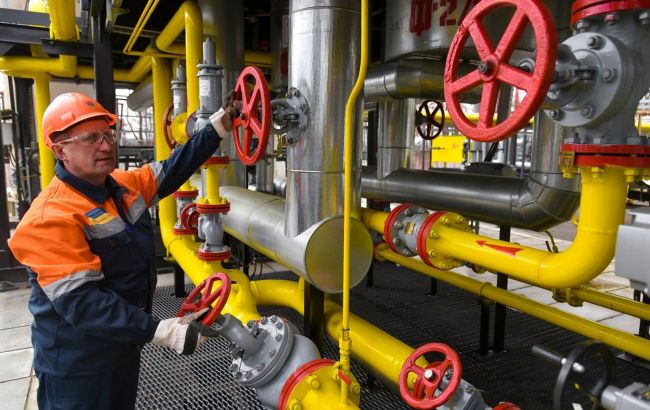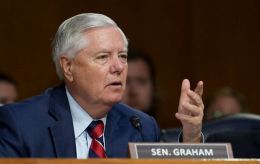Transit rejection: Ukraine proposes new gas supply scheme to Europe
 Ukraine is looking for new gas supply schemes to Europe (photo: UNIAN)
Ukraine is looking for new gas supply schemes to Europe (photo: UNIAN)
Kyiv, Baku, and Bratislava are discussing gas transit and an alternative option for gas supplies through Ukraine. RBC-Ukraine explains below what the alternative entails and whether there is a prospect of the EU continuing to receive gas through Ukraine in 2025.
Contents
- Who needs Russian gas in the EU
- Azerbaijan as an alternative to Russia
- Re-export instead of gas transit
- Russia’s involvement is inevitable
- Pros of transit won't outweigh cons for Ukraine
With just two and a half months remaining until 2025, it remains unclear whether gas deliveries to Europe via Ukraine will continue from January. The contract between Naftogaz and Gazprom for the transit of Russian gas expires on December 31. Kyiv has already said at the highest political level that the contract will not be extended. However, there are still options for continuing gas deliveries through Ukraine.
Who needs Russian gas in the EU
After Russia’s full-scale invasion of Ukraine, EU countries decided to phase out Russian gas by 2027 gradually. Most have found alternative sources and delivery routes for energy resources and are now almost independent of Russian gas transit through Ukraine.
As European Energy Commissioner Kadri Simson stated in May, the EU is prepared for its suspension at any moment. In a comment to RBC-Ukraine, she mentioned that gas transit talks could only resume after Russian troops withdrew from Ukraine.
However, some countries have been and remain interested in gas deliveries via Ukraine, as this route is shorter and therefore cheaper. These include Hungary, Austria, and, most notably, Slovakia.
While Hungarian officials raised the issue of continuing gas transit via Ukraine earlier this year, they have now largely stopped doing so. Budapest has established gas supplies from Russia through the Turkish Stream pipeline and even plans to increase them in 2025. Austria will completely replace Gazprom with gas suppliers from North Africa by 2025. Slovakia, however, has yet to find an alternative, and gas transit through Ukraine remains critical for the country.
Slovakia requires around 2 billion cubic meters of gas annually for domestic consumption. The cessation of discounted Russian gas deliveries via Ukraine could have negative domestic political consequences for Bratislava, due to rising gas prices. This could cost Prime Minister Robert Fico’s government public support. According to RBC-Ukraine’s sources, such concerns have been voiced by the Slovak side at various international meetings.
Azerbaijan as an alternative to Russia
Realizing that gas transit through Ukraine may stop, Slovakia began searching for new gas suppliers at the beginning of this year. The focus fell on Azerbaijan, and Baku is open to discussions. "Azerbaijan currently exports gas to eight countries. I hope Slovakia will become the ninth," Azerbaijani President Ilham Aliyev said in May.
Azerbaijan plans to increase gas supplies to Europe gradually. In 2023, it exported around 12 billion cubic meters of gas there, and in 2024, it aims to export 13 billion. This amounts to nearly half of Azerbaijan’s total gas exports.
The geographical scope of these deliveries is also expanding. Since September 1, Azerbaijan’s state oil and gas company SOCAR began supplying gas to Croatia. SOCAR also sells gas to Bulgaria, Hungary, Greece, Georgia, Italy, Romania, Serbia, Slovenia, and Türkiye. Azerbaijan began expanding gas supplies to these countries in 2021 via the Trans-Adriatic Pipeline. By 2027, the volume of gas supplied to the EU is expected to grow to 20 billion cubic meters annually.
In May, Naftogaz CEO Oleksii Chernyshov met with SOCAR President Rovshan Najaf to discuss potential cooperation in the oil and gas sector, including the possibility of storing Azerbaijani gas in Ukraine’s underground gas storage facilities. However, at the time, few linked the storage issue with gas transit.

Naftogaz of Ukraine CEO Oleksii Chernyshov and SOCAR President Rovshan Najaf (photo: Facebook of O. Chernyshov)
In July, President Volodymyr Zelenskyy confirmed that the topic of supplying Azerbaijani gas through Ukraine was under discussion. "Officials are handling this now... negotiations are ongoing," Zelenskyy said.
Re-export instead of gas transit
So far, discussions about supplying Azerbaijani gas through Ukraine can hardly be called negotiations. No concrete proposals have been made by any party. The issue is still being discussed at a consultative level, in a working format.
"It can’t be called negotiations. The topic comes up at some bilateral meetings, but nothing specific or detailed is being discussed," said a source familiar with the transit talks.
RBC-Ukraine was unable to obtain official comments from either Ukrainian or Azerbaijani officials on the progress of these consultations.
Naftogaz is the main Ukrainian participant in these consultations. In some cases, the gas supply issue also comes up at governmental meetings. According to several sources, Ukraine’s approach has radically shifted.
The Ukrainian side is no longer talking about transit but is offering an alternative that legally would not be considered transit. This alternative involves the gas owner first storing it in Ukraine’s underground storage facilities, after which they can use it at their discretion. These proposals were made to Azerbaijan and Slovakia several months ago.
Naftogaz manages the storage facilities, while Ukraine’s gas transmission system operator (OGTSU) handles only the main pipelines. This is why Naftogaz, rather than OGTSU, is leading the consultations.
Under the new proposal, for example, if Azerbaijan stores gas, it can later sell it on the market or under contracts depending on market conditions and the EU’s gas needs. By selling on the market, SOCAR, the company likely to handle this, could profit from price peaks.
If Slovakia agrees, it could buy gas at the Ukraine-Russia border or where Azerbaijani gas enters Russia, store it in Ukraine’s facilities, and then use it or sell it to third countries. Slovak operators Eustream and trader SPP have previously earned up to $15 billion annually from transit payments and commercial markups from reselling gas, including to Germany, according to former OGTSU head Serhii Makogon. Hungary and Austria are also unlikely to give up the opportunity to buy gas under this arrangement.
This scheme would no longer be considered transit from a legal perspective. For Ukraine, it would be gas re-export.
So far, neither Baku nor Bratislava has provided a definitive response to the proposal.
However, one key condition remains: each side must resolve security issues with Russia. In other words, they will need to negotiate to ensure Ukraine’s gas infrastructure is not targeted in attacks.

A Ukrainian GTS facility damaged by Russian shelling (photo: GTSOU press service)
Sources familiar with the matter told the publication that Azerbaijan has cooled on the idea of supplying gas to the EU and has not touched on the topic for nearly four months. "I think Baku’s near-total inactivity on the issue is related to Russia’s stance, as it will inevitably play a role in the process," said one source.
Russia’s involvement is inevitable
Russia’s participation in gas supplies from Azerbaijan to the EU via Ukraine is virtually unavoidable. First of all, natural gas would transit through Russian territory on its way to Ukraine, as there is no direct route from Azerbaijan. So far, Moscow has not granted any transit rights through its territory to Azerbaijan, Kazakhstan, or Turkmenistan, despite these countries’ longstanding interest in supplying gas to the EU and Ukraine.
A mutual agreement on pipeline access, allowing for transit through Russia’s gas transmission system (GTS), was planned under the CIS framework as far back as 2013, just six months after the CIS free trade zone came into operation. However, Moscow blocked this issue to maintain its monopoly on gas supplies to Europe via Ukraine.
Now, if Baku receives transit approval, Ashgabat and Astana may also demand the same. Currently, gas from Turkmenistan and Kazakhstan reaches European countries via Azerbaijan and Türkiye.
Secondly, Azerbaijan can only independently supply around 5 billion cubic meters of gas. Sources in Baku mentioned this figure, though they noted that achieving it would likely require redirecting some gas from the Turkish Stream to the Ukrainian route. However, for transit purposes, these volumes are insufficient but could be enough for storage in underground gas storage (UGS) facilities.
Hennadii Riabtsev, director of special projects at the Psycheya Center, believes that Azerbaijan will not divert gas from the Turkish Stream to Ukraine to avoid risking relations with Ankara. "Cutting transit through Türkiye would come at a high cost for Azerbaijan, as it would be disadvantageous for its closest partner," Riabtsev told RBC-Ukraine.
Volodymyr Omelchenko, director of energy programs at the Razumkov Center, also believes Baku will not reduce supplies through Türkiye in favor of transit via Ukraine. "Azerbaijan's gas is contracted for the Turkish Stream, and they will not break these contracts. If Azerbaijan does agree to redirect gas to Ukraine, it would discredit itself and lose customers who may turn to Gazprom," Omelchenko said in a comment to RBC-Ukraine.
Thus, it is possible that some portion of the gas in these supplies could be of Russian origin. However, it is unclear what that share might be.
Even if Azerbaijan independently supplies gas, Russia is unlikely to agree to such a plan. For Moscow, maintaining the supply of Russian gas to the EU is critical, both for economic gain — continuing to profit from sales to the EU — and for political leverage — demonstrating that Europe cannot function without Russian energy resources. These goals can be achieved with a transit arrangement, but not with the alternative proposed by Ukraine, which would allow Europe to manage without Russian supplies. Therefore, Moscow has little incentive to allow the transit of Azerbaijani gas without including its own.
Pros of transit won't outweigh cons for Ukraine
If the gas storage option in Ukrainian UGS is approved, Naftogaz could receive additional income from storage fees. Additionally, whether via a contract or for storage, the tariff for transporting gas through Ukraine from the eastern to the western border would significantly increase.
Currently, the transit tariff under the contract is $2.66 for transporting 1,000 cubic meters of gas per 100 kilometers. This tariff was calculated in 2019 based on an annual transit volume of 45 billion cubic meters.
Given that transit volumes have fallen almost threefold to 14 billion cubic meters, the current tariff is effectively three times undervalued. If supplies fall to 5 billion cubic meters, the tariff could increase sixfold, to roughly $16. However, the final tariff will be determined by the National Commission for State Regulation of Energy and Utilities (NCREU).
Despite this financial "benefit" for Ukraine, it would still be dwarfed by Russia’s profits. Gazprom would continue to receive income from the transit of Azerbaijani gas and potentially from the gas itself, should it supplement Azerbaijani supplies. While exact revenue figures are hard to estimate, Russia could earn billions annually, whereas Ukraine’s earnings would be limited to a few hundred million.
In the end, Russia could emerge as the bigger winner from gas supplies via Ukraine, regardless of the route. Moreover, by continuing to offer transit services to the EU, Ukraine would effectively support Russia’s budget. It would also indirectly bolster the governments of Slovakia’s Robert Fico and Hungary’s Viktor Orbán (should Hungary begin purchasing this gas).

Heads of Government of Hungary and Slovakia, Viktor Orbán and Robert Fico (photo: Getty Images)
"If there is transit, these regimes [Fico and Orbán] will persist, continuing to block Ukraine's key initiatives related to EU integration and military support. Thus, we would lose both politically and economically. If Fico and Orbán don’t have access to cheap oil and gas, they will soon lose power," Omelchenko said.
At the same time, he suggests that gas transit to European consumers from third countries via Ukraine could continue under a different arrangement, as RBC-Ukraine reported in March. This could involve booking GTS capacities. Every month, Slovakia, Hungary, or any other gas-buying country could reserve capacity for transporting gas purchased from Azerbaijan or even Russia. In this case, Ukraine could influence the political actions of these countries.
"The capacity auctions are held monthly. If something goes wrong, the auction simply won't happen," Omelchenko told RBC-Ukraine.
A senior official speaking "off the record" predicted that the likelihood of any gas continuing to transit through Ukraine to the EU after 2025 is almost zero. If there is a political decision to stop the transit, justifying it economically would not be difficult. This could be achieved primarily through the transit tariff. Taking all risks into account, the tariff could be set at a level that would make the gas trade unprofitable for all parties involved.
Additionally, Slovakia must coordinate any additional gas supplies with Brussels. However, the EU sees no need for this. Moreover, Kadri Simson warned member states of the political danger of new agreements involving Russia. "The EU can live without this Russian gas. If member states decide to continue importing it, even outside existing contracts or by signing new agreements for new capacities, I want to clarify that it is not necessary. This is a political choice, and it is dangerous. We must remember that the cost of relations with Russia is measured not just in the price of gas but in the lives lost in Ukraine," she stated on October 16 after the EU Energy Council meeting.
However, if gas transit to the EU decreases or stops altogether, Ukraine must be ready for higher gas transportation tariffs domestically. Currently, 75% of these tariffs are covered by transit revenues. Without these, tariffs would have to increase significantly. "Tariffs will have to rise, no doubt. The extent will depend on the transit volumes from next year and whether there will be any at all," the source said.
In nominal terms, according to Makar Makohon, the internal gas transport tariff would not increase dramatically. "Right now, gas transportation within the domestic system costs approximately 0.2 UAH per cubic meter. Even with zero transit, I estimate this figure will rise no higher than 0.6 UAH per cubic meter," he predicts. Makohon also noted that considering current gas prices for commercial consumers, the total price of gas delivery would increase by no more than 3%, which is not critical.
This tariff increase won’t affect the population, as the transport tariff is included in the overall gas price, which is currently fixed at 7.96 UAH per cubic meter. The rise in the transport tariff will mainly reduce Naftogaz’s income due to higher payments to the Gas Transmission System Operator of Ukraine (GTSOU).
Additionally, without transit, Ukraine will lose the ability to substitute its own gas for transit gas in the eastern regions during the winter. This would increase the need to pump domestic gas from storage facilities located in the western part of the country. However, based on the technical capabilities and gas reserves in the GTS, this shouldn’t pose significant issues. The system has already undergone two tests of this scenario, and government sources assure that there should be no disruptions in its operation.

